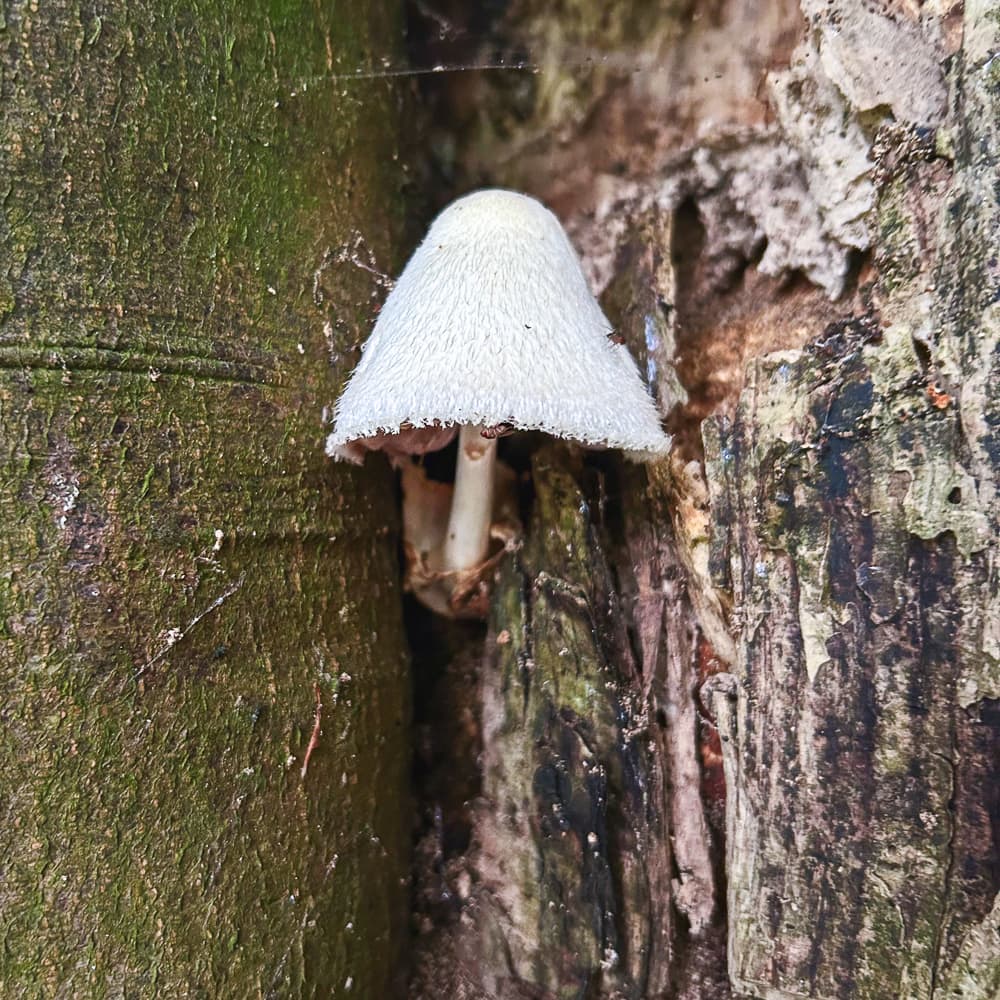Silky Rosegill - Volvariella bombycina
At A Glance:
Silky Rosegill - Volvariella bombycina
Other names: Agaricus bombycinus, Volvaria bombycina
Season: Summer, Autumn
Edibility: Edible
Fungi Type: Fungi With Gills, Saprobic
Habitat: Deciduous woodland, particularly found on elm, beech, maple, oak
Key Features:
- Most commonly a solitary find.
- Growing from dead hardwood (often from dead wood in living trees).
- White silky fibres on cap.
- Membranous volva at the base of the stem.
- Usually growing high in trees. No Amanita fungi in the UK grows high in trees, so this is an excellent ID feature to distinguish it.
The Silky Rosegill is a particularly beautiful fungi to come across. It’s most commonly found growing by itself from dead deciduous wood. With careful observation, this fungi is easy to identify and it’s a good edible species. However, because of its rarity, this species is best left be.
Table of Contents
Habitat
A saprobic species - found growing on dead hardwood, particularly beech, elm and maple. Often found growing from dead damaged wood on living trees, preferring wood in early stages of decomposition. This is almost always a solitary find, although occasionally can be seen in small groups of 2-3.
Cap/Flesh
The cap and flesh is white to off-white (cream) coloured, browning a little with age. It’s covered in fine silky fibres all the way to the cap margin, giving it a ‘fluffy’ look.
The size and shape of the cap is quite variable between specimens and development stage.
The cap shape starts ovoid, becoming bell-shaped with maturity, usually with an inrolled margin.
Average cap size: 50 - 200mm
The cap can sometimes have remnants of the volva attached to the cap.
Gills/Pores/Tubes/Spore
The gills are white or pink depending on age. They are crowded, free from the stipe and appear to terminate before the margin.
Stipe/Ring/Volva
Stipe length: 70 - 150mm
Stipe diameter: 10 - 20mm
Stipe colour: White
Stipe ring: No ring
Stipe texture: Smooth, Fibrous
Stipe other: tapering from base, often curved
Stipe base: bulbous
Volva: persistent, membranous, white, yellowing with age. Most commonly has brown flecks or scales over it.
Spore Print
Pink to pink/brown. Ellipsoidal. Smooth.
Possible Confusions
Taste/Smell
A pleasant mildly mushroomy smell and taste with excellent texture. Dries well.
Notes
Etymology: Volvariella refers to the prominent visible volva at the base of the stipe. Bombycina is derived from the Latin ‘bombycis’ meaning silky.
References
Mushrooms and other fungi of Great Britain & Europe - Roger Phillips
Mushrooms and Toadstools of Britain and Ireland - Blacks Nature Guides
The GB Checklist of Fungal Names - British Mycological Society








